Improving curb appeal is a surefire way to boost your home’s property value. By focusing on just a few exterior design elements, you can make a good first impression on visitors and passersby. We’ll guide you through five expert-designed upgrades to make a house’s street-facing facade more attractive.
Fetching Front Porch
This 1909 four-square home in Clarendon Hills, Illinois, had “Grey Poupon” yellow aluminum siding and a tiny off-kilter portico from previous upgrades. Both things made it look like a shell of its former self.
Before
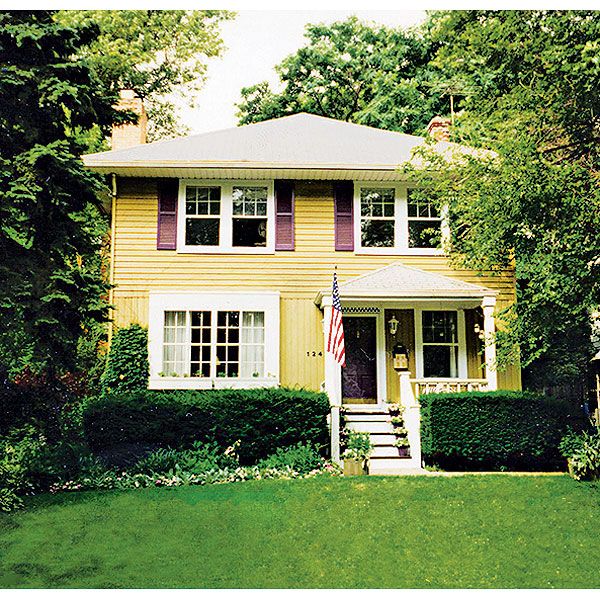
The entry—and what surrounds it—are key to making a home welcoming. The homeowner, relying on a vintage photograph, set about restoring the facade’s former charm. Taking a landscape course helped her design her own hardscape scheme while architect David Raino-Ogden drafted the plans.
After
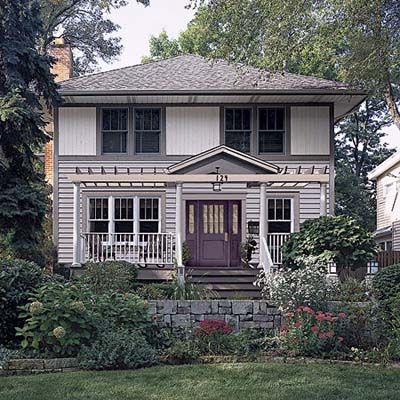
Thoughtful design and attention to detail paid off for this home, leading to a complete front porch transformation.
An airy pergola runs almost the length of the facade to add square footage and symmetry. Shifting the opening toward the center and adding a wider door with sidelights makes the front door feel more inviting and proportional to the rest of the exterior. Taupe-colored siding in different shades and directions adds visual interest, and the vertical boards on top complement the muntins of the new historically accurate windows.
Finally, a stone wall framed by lush greenery creates a beautiful terraced front garden, correcting what had previously been an awkwardly sloping lawn. Prairie-style lanterns span the way to brighten the front walk and portico.
Overall, the improvements boosted the homeowner’s property value by 25%.
Varied Palette
All-white paint schemes may seem safe, but they do nothing to highlight a home’s architectural details. In this 1860s Second Empire-style house on Staten Island, the white paint washed out everything from the cornice down to the balusters.
Before
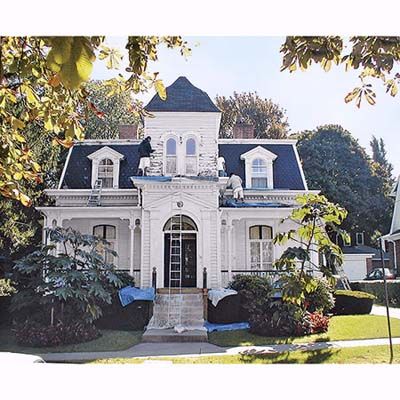
Aside from being dull and one-dimensional, the white color was also historically inaccurate for the period. “The Victorians believed in a house being part of nature, and they tried to make it suit its surroundings by using earth tones,” said the project’s colorist James G. Ferreri.
After
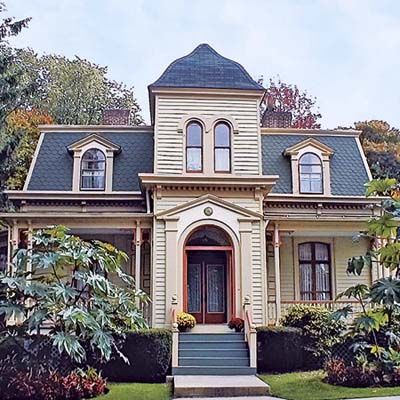
Ferreri designed a harmonious five-color paint scheme that respected the home’s history and enunciated its architectural features. After testing swaths of hues on the house and viewing them in natural light, he settled on two beiges for the body and wide trim boards, cream for door and window surrounds, and a contrasting pumpkin orange to make narrow trim and railings pop.
The homeowner also repainted the black roof tiles with a muted slate color to balance the overall look, which was previously top-heavy.
All it took was some exterior painting to increase the property’s value by 12%.
Bold Federal Rowhouse
As the Staten Island home showed, the right shade of paint can make your house stand out and completely transform your exterior.
Before
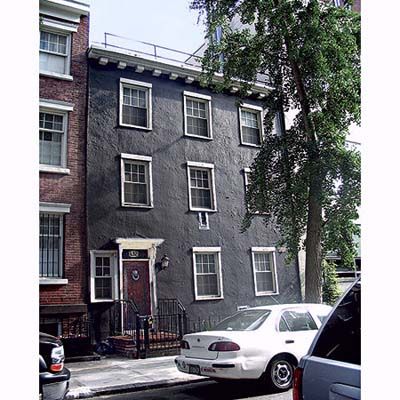
For this 1820s Greenwich Village rowhouse, the oldest wood-framed home in its area, the paint covering the cracked stucco was downright repellent. The homeowner commented it exuded more “exhumed corpse” than soothing gray, and indeed, people walking by wouldn’t notice the house at all.
After
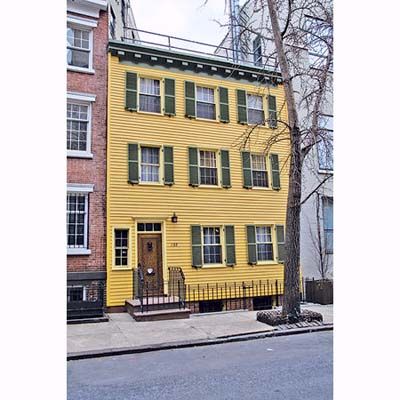
A fresh coat of paint, together with a few architectural touches, transformed the rowhouse—and even helped the homeowner become more compliant with city regulations. Fire-resistant fiber-cement clapboard replaced the original stucco. Crews painted it an autumnal shade of yellow to bring the facade back to life. A green cornice and shutters kept with the period’s palette and matched paint remnants found on the body of the house.
The home’s original shutters were long gone, so the homeowner added cedar replacements to draw attention to the once-receding windows. An angular and clean-lined bracketed door entablature also aligned with Federal styling and complemented the window casings. The look was completed with a lantern and house number set that matched the iron railings.
Ultimately, the homeowner increased their property value by an impressive 30%.
Upgrade Garage Doors
A front-facing garage can bring down curb appeal, especially if it clashes with the rest of your home’s styling.
Before
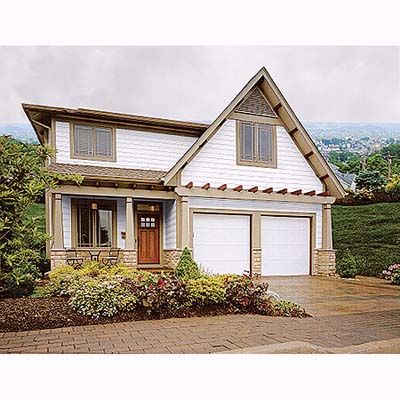
This Arts and Crafts Revival cottage in Newport, Kentucky struggled with worn, ill-suited garage doors—a stark contrast to the facade’s stone porch piers, Prairie-style divided light windows, and other finely wrought details.
After
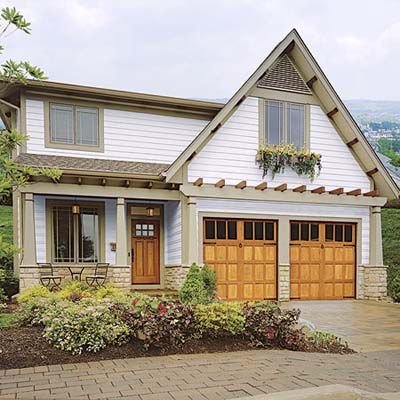
Replacing the existing white-painted doors with a redwood carriage-house pair cost about $5,000. It was a steep investment but helped unite the look of the honey-hued rafter tails and entry door. The homeowner also added divided lights, recessed paneling, and black iron hardware to mirror the look of their front porch.
This was a simple, practical upgrade that increased the home’s property value by 10%.
Pavers & Plants
The first thing someone sees from your street is often a driveway, so keeping yours attractive goes a long way toward curb appeal.
Before
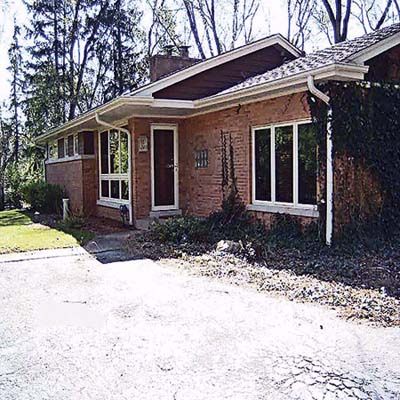
This mid-century ranch in the Chicago suburbs suffered from a crumbling asphalt driveway. Not only was it an eyesore, but it was also confusing—you couldn’t tell where the street ended and the driveway started. “It felt like you were parking on the front stoop,” said designer Peter Stinchcomb.
After
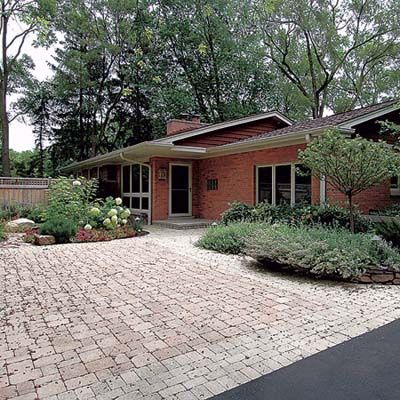
Stinchcomb reimagined the space by starting with the driveway. Tumbled concrete pavers provided a more visual buffer between the street and house than a new asphalt slab would. Terracotta pavers in the center with a sand-colored border delineate the parking pad from the surrounding walkway.
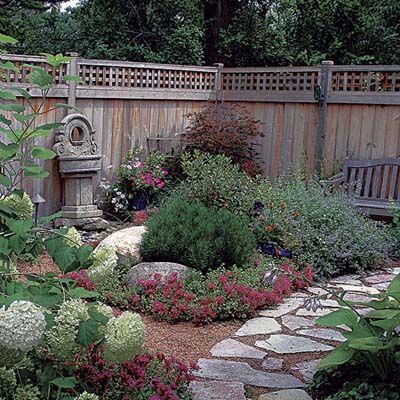
The transformation continued with the home’s front garden. Stinchcomb added flowering plants like hydrangea, catmint, and dragon’s blood to catch the eye, as well as a broken flagstone path that curves through the space.
Low pagoda-style lanterns placed throughout the garden added depth and sparkle at night. Finally, a lattice-topped cedar board fence set into a large side yard enclosed everything together, directing attention and foot traffic toward the entry.
The landscaping project added 10% to the homeowner’s property value.
